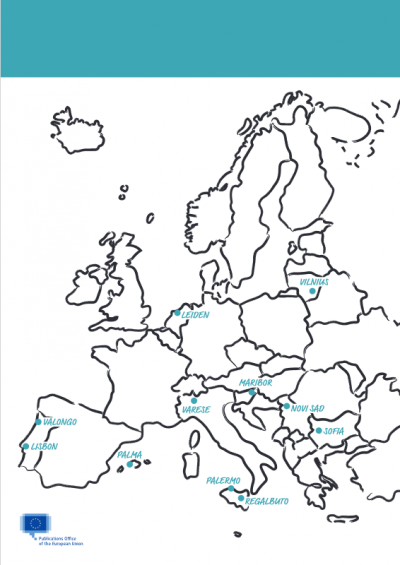Description
BiodiverCities was a pilot project of the European Parliament, implemented by the Joint Research Centre and Directorate-General for Environment of the European Commission.
The project collected practices on how to engage citizens in co-creating visions around urban nature, monitoring, and solutions to improve urban biodiversity in the fields of planning and policy-making. It also contributed to the mapping of ecosystem services and assessment of how urban green infrastructure can be used to provide local benefits for people and nature, by contributing to enhance regional biodiversity.
The project sits within the political context of the EU Biodiversity Strategy for 2030 and the latest COM (2022) 404 final CONFERENCE ON THE FUTURE OF EUROPE Putting Vision into Concrete Action. BiodiverCities can also provide knowledge and know-how of direct interest to EU Missions for Climate-Neutral and Smart Cities, Adaptation to Climate Change and Soil.
Through a public "Call for an expression of interest", the BiodiverCities project selected ten cities to experiment participatory and innovative approaches to enhance biodiversity in urban areas. The cities we worked with are: Leiden (Netherlands), Palma (Spain), Valongo (Portugal), Vilnius (Lithuania), Maribor (Slovenia), Novi Sad (Serbia), Palermo (Italy), Regalbuto (Italy), Varese (Italy) and Lisbon (Portugal). The city of Sofia (Bulgaria) was involved into the second stream of work of this project, dedicated to the mapping of urban biodiversity and ecosystem services at European scale.
We collaborated with experts representing each city, coming from different “walks of life”: practitioners of citizen engagement, planners, institutional representatives of local municipalities, researchers and CSO.
BiodiverCities was centered on co-creation as a pivotal element in urban planning and policymaking for biodiversity. In this spirit, ten participatory and innovative experiments took shape, with different focuses: from mapping of swifts to establishing a new culture of biodiversity, re-framing the relationship between humans and nature. Yet, they shared the aim to empower citizens to co-create policies that are fit-for-purpose: designed with citizens and for citizens.The citizen engagement activities were implemented in 2021-2022.
The project started in late January 2020 and ended in April 2023.
The main public output of BiodiverCities is the "BiodiverCities Atlas: A participatory guide to building urban biodiverse futures" (https://publications.jrc.ec.europa.eu/repository/handle/JRC133253), presenting the different case-studies and sharing highlights, challenges, including institutional, and lessons learnt of the local engagement processes.
When and Where
Policy Context
Participants
Methodologies
Impact
We would be very happy to present this work in different venues and to different audiences, including policymakers, practitioners and researchers. If you see any opportunities in this sense, please reach out to us.
Assessment
As Competence Centre on Participatory and Deliberative Democracy, we were particularly interested to understand the institutional conditions for citizen engagement to work. Two researchers, Ann Karin Tennås Holmen (University of Stavanger) and Helena Junyer Puig (University of Utrecht), examined the institutional challenges to co-creation encountered by local partners, whether local municipalities or non-governmental actors, from the ten European cities involved in the BiodiverCities project. Their research work and results are published in the BiodiverCities Atlas: "Co-creation with citizens: lessons learnt from the Biodivercities project" by Ann Karin Tennås Holmen (pp. 87-89) and "Institutional challenges to co-creation: a non-governmental perspective" by Helena Junyer Puig (pp. 89-93).
As far as institutional conditions are concerned, carrying out citizen engagement is not just a matter of taking the decision to do it. Public administrations face difficulties in changing their focus towards more inclusive, collaborative and participatory decision-making. Moreover, such processes not only need to be initiated, but also maintained overtime. Enabling conditions for meaningful citizen engagement have to mature through practice.
A lunch seminar was organized in February 2023 to present the results of the research. The recording and a summary of key take-away messages are available at the following link: https://cop-demos.jrc.ec.europa.eu/blog/institutionalising-co-creation-challenges-and-opportunities
Lessons learnt for the project, in its integrity, were discussed during the final policy event that took place on September 8, kindly hosted by the European Committee of the Regions. The report of the event is available in the "Resources" section below and the recording is accessible here (https://frontend.cor.smv.cloud/en/sessions/reference/biodivercities-conference).
"BiodiverCities has indeed presented relevant lessons for the future of citizen engagement in policymaking and research for the Commission and beyond e.g.:
- Citizen engagement needs to be inclusive and to be inclusive, different formats and recruitment strategies are to be used;
- Trust and time are imperative for co-creative projects to take place and be meaningful;
- Citizen engagement should be understood as a mean not a goal, in order to be mainstreamed. Moreover, its mainstreaming will only take place when institutional changes come about, and these changes will only be realized if they are accompanied by a structural support from sponsors i.e. public institutions.
- Spaces where participatory activities are developed can also have a big influence on the success of the projects."
From: Junyer Puig, H., How to design green cities with citizens: Insights from BiodiverCities., Quaglia, A. editor(s), European Commission, 2023, JRC131883, p. 13.
